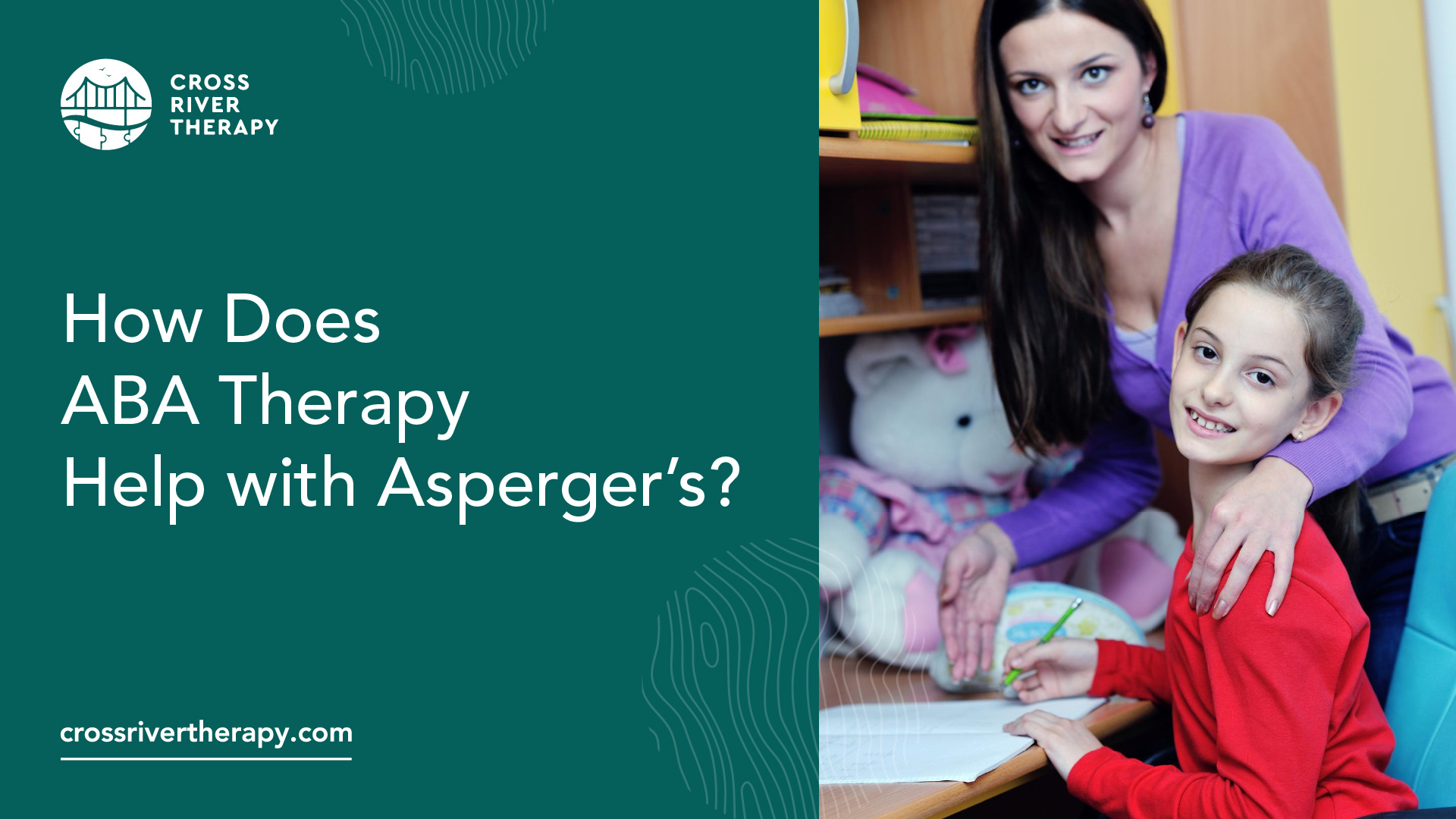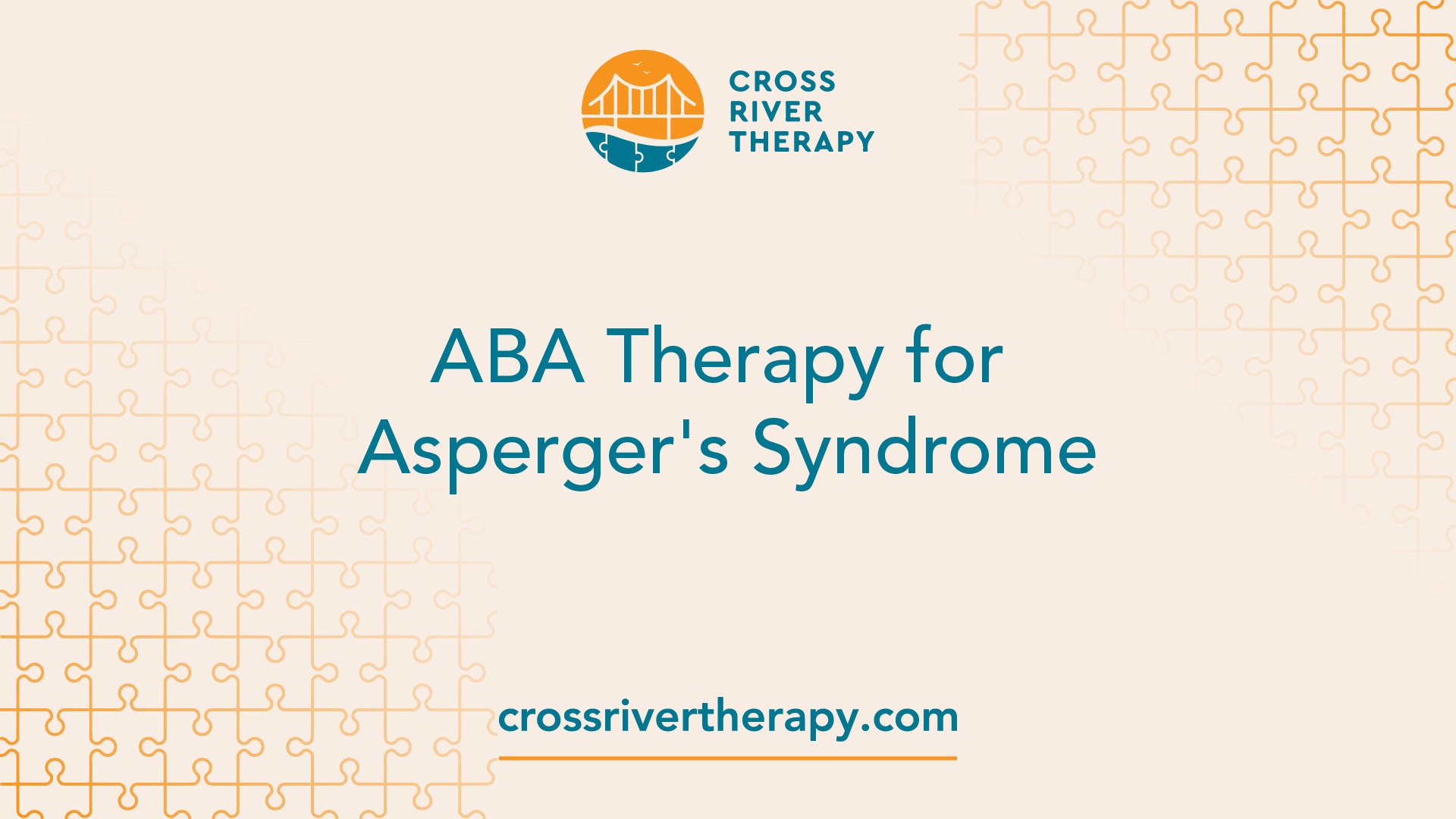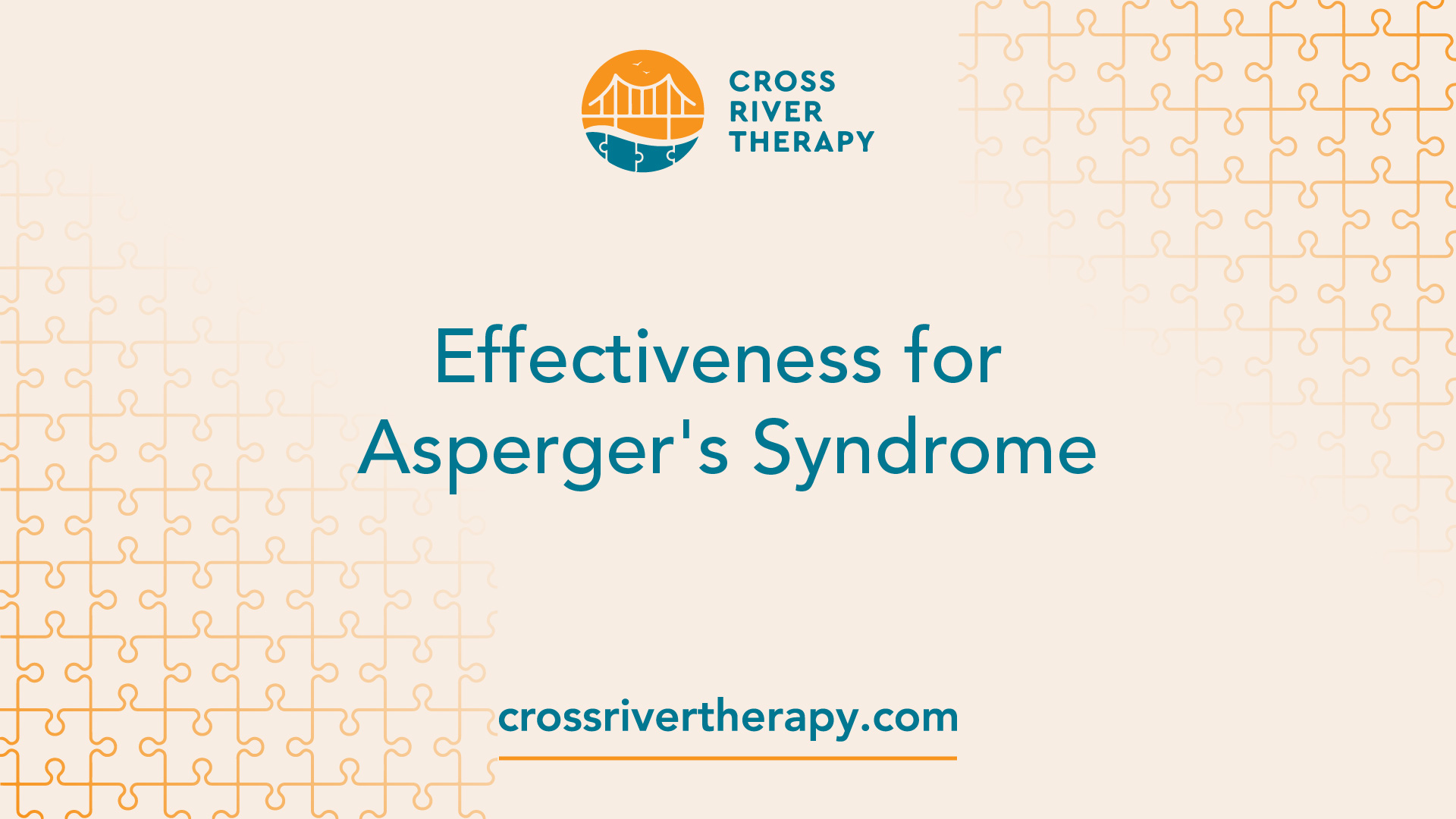How Does ABA Therapy Help with Asperger’s?
Discover how it helps with skill development and positive outcomes.

Understanding ABA Therapy for Autism
ABA therapy has been a cornerstone in helping children with autism and related developmental disorders since the 1960s. It is considered an evidence-based best practice treatment by the US Surgeon General and the American Psychological Association. With over 20 studies supporting its effectiveness, ABA therapy has proven to be a valuable approach in improving outcomes for individuals with autism.
Overview of ABA Therapy
ABA therapy, or Applied Behavior Analysis therapy, is a scientifically validated approach primarily used in treating individuals with autism spectrum disorder (ASD). It has gained significant attention and support due to its structured and systematic approach to behavioral improvement. Rooted in decades of research, ABA therapy utilizes methodologies that have produced positive outcomes for many families and professionals.
The goal of ABA therapy is to promote the development of essential life skills and reduce problematic behaviors through the use of evidence-based techniques. The therapy focuses on breaking down complex skills into smaller, manageable steps, allowing individuals to learn and practice each step before progressing further. By reinforcing positive behaviors and teaching new skills, ABA therapy aims to improve communication, social interaction, self-care, and academic performance.
Effectiveness of ABA Therapy
ABA therapy is recognized as an evidence-based treatment by reputable organizations such as the American Psychological Association and the American Academy of Child and Adolescent Psychiatry. Numerous studies have demonstrated the positive impact of ABA therapy on individuals with autism, especially children. The structured nature of ABA therapy allows for individualized treatment plans tailored to the unique needs and strengths of each individual.
The long-term effects of ABA therapy can be profound. Many individuals who have undergone ABA therapy experience enhanced abilities in communication, social interaction, self-care, and academic performance. The therapy not only focuses on addressing specific behaviors but also aims to improve the overall quality of life for individuals with autism and their families.
By providing a structured and evidence-based approach, ABA therapy offers hope and support to individuals with autism and their families. Its effectiveness in promoting skill development and positive outcomes has made it a widely recognized and respected therapy for individuals with autism spectrum disorder.
Controversies Surrounding ABA
While Applied Behavior Analysis (ABA) therapy has shown effectiveness in helping children with autism learn skills and reduce problematic behaviors, there are some controversies surrounding its use. It is important to understand both the criticisms of ABA therapy and the different perspectives on its approach.
Criticisms of ABA Therapy
One criticism of ABA therapy is its historical association with the use of punishments alongside rewards. However, it is important to note that punishments are no longer used in ABA practices. Despite this, some critics argue that the therapy can be too repetitive and demanding for children.
Another criticism is that ABA therapy may sometimes focus too heavily on eliminating unwanted behaviors rather than building new skills. Some practitioners believe that therapy should emphasize what children should be doing rather than solely focusing on what they shouldn't be doing.
Perspectives on ABA Approach
While ABA therapy has received support from many families and professionals due to its structured and systematic approach to behavioral improvement, there are differing perspectives on its use. Some autistic self-advocates argue that ABA tries to make children with autism fit neurotypical standards rather than acknowledging and accommodating their unique needs. They suggest that speech and language therapy might be a more helpful approach for autistic children to build skills and independence [3].
It is important to recognize and respect these different perspectives while making decisions about therapeutic approaches for individuals with autism. Each child is unique, and what works well for one child may not be the best fit for another. It is essential to consider a child's specific needs and consult with professionals to determine the most appropriate therapy approach.
In the following sections, we will explore the benefits of ABA therapy, including skill development and positive outcomes, as well as the importance of individualized ABA programs and the implementation of ABA techniques. Additionally, we will delve into the effectiveness of ABA therapy for individuals with Asperger's Syndrome and the role of early intervention in promoting positive outcomes.
Benefits of ABA Therapy
ABA therapy, or Applied Behavior Analysis therapy, has been widely recognized as an effective intervention for individuals with autism spectrum disorder, including those with Asperger's syndrome. This section will explore the benefits of ABA therapy, focusing on the skill development and positive outcomes that can be achieved through this evidence-based approach.
Skill Development in ABA
One of the primary goals of ABA therapy is to promote the development of essential life skills in individuals with autism. This includes areas such as communication, social interaction, self-care, and academic performance. Through the use of structured and individualized interventions, ABA therapy helps individuals acquire and generalize these skills.
The emphasis on skill development in ABA therapy is supported by numerous studies. More than 20 studies have shown that intensive and long-term therapy using ABA principles leads to significant improvements in intellectual functioning, language development, daily living skills, and social functioning for many children with autism. These gains in skills can have a profound impact on the daily lives and future prospects of individuals with Asperger's syndrome.
Positive Outcomes of ABA
The positive outcomes of ABA therapy extend beyond skill development. ABA therapy focuses on the generalization of skills, meaning that the behaviors and skills learned in therapy sessions are transferred and applied to different environments, situations, and people. This emphasis on generalization helps individuals with Asperger's syndrome function adaptively beyond the therapy room [2].
Moreover, ABA therapy is recognized as an evidence-based treatment by reputable organizations such as the American Psychological Association and the American Academy of Child and Adolescent Psychiatry. Its techniques and strategies have been found to produce measurable positive outcomes, particularly for children with autism spectrum disorder. These outcomes can include improved behavior regulation, increased independence, enhanced social skills, and greater overall quality of life.
By focusing on skill development and promoting positive outcomes, ABA therapy offers valuable support for individuals with Asperger's syndrome. Early intervention is particularly crucial, as it allows individuals to benefit from ABA therapy during their critical developmental years. To learn more about the effectiveness of ABA therapy for Asperger's syndrome and the importance of early intervention, continue reading our article on ABA therapy for Asperger's syndrome.
Individualized ABA Programs
When it comes to ABA therapy, individualization is key. A board-certified behavior analyst (BCBA) plays a crucial role in designing and overseeing customized ABA programs for individuals with Asperger's syndrome and other forms of autism. These programs are tailored to each learner's unique skills, needs, interests, preferences, and family situation.
Customized ABA Programs
ABA therapy approaches are not one-size-fits-all. Instead, they are designed based on the individual's specific characteristics, challenges, strengths, and family dynamics. Before developing a treatment plan, an ABA therapist conducts a comprehensive evaluation of the child's needs. For children with Asperger's syndrome, who may have strong verbal language skills but struggle with socio-emotional skills, the intervention is customized to involve the child's unique strengths and interests.
For example, if a child with Asperger's syndrome loves playing ball, the ABA program can incorporate turn-taking activities using a ball. By leveraging the child's interest, the therapist can teach important social skills while keeping the child engaged and motivated.
The goal of customizing ABA programs is to address specific areas of development, such as communication, social skills, independence in daily routines, and community skills, based on the individual's needs and goals [5]. By tailoring the program to the unique profile of each child with Asperger's syndrome, ABA therapy aims to maximize progress and positive outcomes.
Role of BCBA in ABA Therapy
The role of a BCBA in ABA therapy is vital. These highly trained professionals have extensive knowledge and expertise in behavior analysis and are responsible for designing, implementing, and overseeing ABA programs. BCBA's work closely with individuals with Asperger's syndrome, their families, and the therapy team to develop effective strategies that address specific goals and challenges.
BCBA's conduct thorough assessments to identify the unique needs of individuals with Asperger's syndrome and create individualized treatment plans. They collaborate with other professionals, such as registered behavior technicians (RBT) or board-certified assistant behavior analysts (BCABA), to ensure the program is implemented effectively.
Moreover, BCBA's continuously monitor progress, make data-driven decisions, and modify the program as needed to ensure that the therapy remains effective and aligned with the individual's changing goals and needs. They also provide guidance and support to parents and caregivers, empowering them to reinforce newly acquired skills and generalize them to everyday life.
In summary, individualized ABA programs, overseen by BCBA's, provide tailored interventions for individuals with Asperger's syndrome. By customizing the therapy to the unique strengths, challenges, and interests of each individual, ABA therapy aims to facilitate skill development and enhance positive outcomes.
Implementation of ABA Techniques
ABA therapy utilizes various techniques to facilitate positive changes in individuals with autism. Two key components of ABA therapy implementation are positive reinforcement and data-driven decision making.
Positive Reinforcement in ABA
Positive reinforcement is a fundamental strategy used in ABA therapy. It involves providing rewards or incentives to increase the likelihood of desired behaviors being repeated. When a behavior is followed by something valued (a reward), the individual is more likely to engage in that behavior again.
By employing positive reinforcement, ABA therapists aim to motivate individuals with autism to acquire and maintain new skills. Rewards can take various forms, such as verbal praise, tokens, stickers, or access to preferred activities or items. The specific reinforcement used depends on the individual's preferences and what is most meaningful to them.
The application of positive reinforcement in ABA therapy helps individuals develop essential life skills, such as communication, social interaction, self-care, and academic performance. With consistent reinforcement, individuals can experience significant improvements in these areas, leading to enhanced independence and overall well-being.
Data-Driven Decision Making
Data-driven decision making is a crucial aspect of ABA therapy. ABA therapists continuously collect data on a child's progress to assess their response to interventions and make informed decisions about treatment strategies. This approach ensures that therapy remains effective and evolves in response to the individual's changing needs and progress.
By systematically recording and analyzing data, therapists can objectively evaluate the effectiveness of interventions and make necessary adjustments. Various types of data may be collected, including behavior frequency, duration, and intensity. This information helps therapists identify patterns, track progress, and determine whether modifications to the intervention plan are necessary.
Data-driven decision making allows for individualized treatment plans tailored to the unique needs of each person receiving ABA therapy. It ensures that interventions are evidence-based and focused on maximizing progress, while also providing a framework for ongoing evaluation and adjustment.
Both positive reinforcement and data-driven decision making play vital roles in the successful implementation of ABA therapy. These techniques help individuals with autism acquire new skills, increase desired behaviors, and optimize their overall development. By utilizing these strategies, ABA therapists provide personalized and effective support to individuals with autism spectrum disorder.
ABA Therapy for Asperger's Syndrome

ABA therapy, known for its effectiveness in treating children with Autism Spectrum Disorders (ASDs), including Asperger's syndrome, has been widely recognized as a valuable intervention for individuals on the autism spectrum. Let's explore the effectiveness of ABA therapy specifically for Asperger's syndrome and the benefits of early intervention.
Effectiveness for Asperger's Syndrome

ABA therapy is the only intervention with decades of clinical evidence supporting its effectiveness for children with Asperger's syndrome and other ASDs. The principles of ABA therapy, based on learning theory, help individuals with Asperger's syndrome improve their social interactions, communication skills, and adaptive behaviors.
Research conducted by the UCLA Young Autism Project found that children who received ABA therapy showed significant improvements in their intellectual and educational functioning compared to a control group. This study demonstrated that 47% of children who received ABA therapy reached normal intellectual and educational functioning, while only 2% of the control group achieved the same level of functioning.
Early Intervention with ABA
ABA therapists emphasize the importance of early intervention for children with Asperger's syndrome. Starting ABA therapy as soon as a child receives a diagnosis of an ASD, including Asperger's syndrome, or as soon as parents suspect atypical development, can lead to better outcomes.
By starting ABA therapy early, children with Asperger's syndrome have the opportunity to develop essential skills and overcome challenges in areas such as social interaction, communication, and behavior. ABA therapists work closely with the child and their family to create an individualized treatment plan tailored to the child's unique strengths and deficits [4].
Early intervention with ABA therapy allows children with Asperger's syndrome to acquire crucial skills and build a strong foundation for their future development. It provides them with the tools necessary to navigate social situations, communicate effectively, and engage in adaptive behaviors.
To learn more about ABA therapy and its applications for various aspects of autism intervention, check out our articles on ABA therapy for impulse control, ABA therapy and language development, and ABA therapy and emotional regulation.
References
[1]: https://www.autismspeaks.org/applied-behavior-analysis
[2]: https://abacustherapies.com/understanding-aba-therapy-pros-and-cons-explained/
[3]: https://childmind.org/article/controversy-around-applied-behavior-analysis/
[4]: https://behaviorexchange.com/turning-to-aba-for-children-with-aspergers-syndrome/



